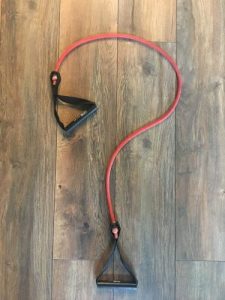
You probably ask clients about food, sleep, perceived exertion and energy levels at each session. What about getting feedback about yourself? If you just cringed, you are like many personal trainers. Nobody likes to ask for compliments or worse – criticism. But, it’s necessary when you are running a business based on customer satisfaction and results.
If you just cringed, you are like many personal trainers. Nobody likes to ask for compliments or worse – criticism. But, it’s necessary when you are running a business based on customer satisfaction and results.
Sure, you can gather customer reviews on websites like Yelp or Facebook. Make sure you have a business page set up in those places and let people know about it so they can visit and review. The downfall to this method is that people’s opinions about you and personal training may change from that initial review. Which is why you should keep tabs on perceptions regularly. The same way you check in with client goals and progress periodically.
Make these questions part of your routine as a personal trainer. They will keep you on your best behavior and support your business efforts. Ask these questions before, during or after your personal training sessions. You don’t have to ask every question every time. You can choose one for each session, ask all three or only ask every two or three sessions. Do what works for you. But, do ask.

1. What exercise/piece of equipment did you like best/worst in this workout and why?
The WHY part of this question is key and doesn’t need to be part of the initial question. After your client responds you can say, “why did you like/dislike that exercise”? Your client might tell you he didn’t like planking – yet when you follow up he might say that he knows it is good for him and just finds it challenging.
Don’t ever take a grunt at face value. Always dig deeper and ask what it means. Be curious about your client’s likes and dislikes and why they feel the way they do.
2. Is there anything you would like me to do differently as your coach?
Your client may look puzzled when you ask this. She might say, “no you’re great”. Either way, you could elaborate and respond with, “Do you like it when I am enthusiastic and push you or do you prefer me to be calmer and focus on correcting form?” Phrase this in a way that resonates with you.
Everybody likes a different style of motivation and it could change from day to day. Finding this out helps you get to know what your client prefers and provide that for her.
3. What goals are most important to you this week/month? Goals can be related to equipment, results, feelings, nutrition, etc. So, if you don’t get a specific response follow-up by tossing one of the mentioned categories into the question. For example: “Do you have any specfic goals this month related to nutrition?” or “Is there any particular piece of equipment you want to work toward a goal on this month?”
Be curious! BUT – pay attention to each client. Some will appreciate you asking questions, others may get annoyed with too many questions. So, be curious, but be an exceptional active listener and pay attention to nonverbal cues such as disinterest in questions or enthusiasm about them.
Learn about Handling Comments and Complaints in Your Fitness Business – near 26 minutes we talk about getting feedback in your business.
[info type=”facebook”]If you’re an NFPT trainer, join the Facebook Community Group to share and if you’re not, come chat with NFPT here![/info].
Beverly Hosford, MA teaches anatomy and body awareness using a skeleton named Andy, balloons, play-doh, ribbons, guided visualizations, and corrective exercises. She is an instructor, author, and a business coach for fitness professionals. Learn how to help your clients sleep better with in Bev's NFPT Sleep Coach Program and dive deeper into anatomy in her NFPT Fundamentals of Anatomy Course.

